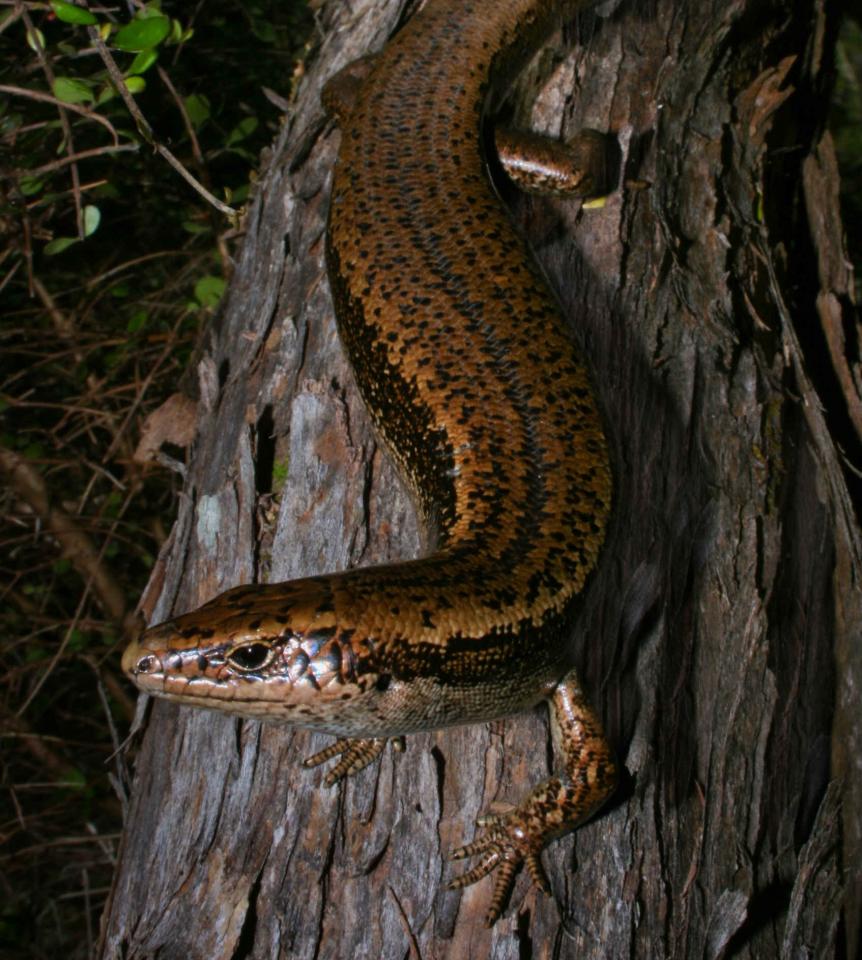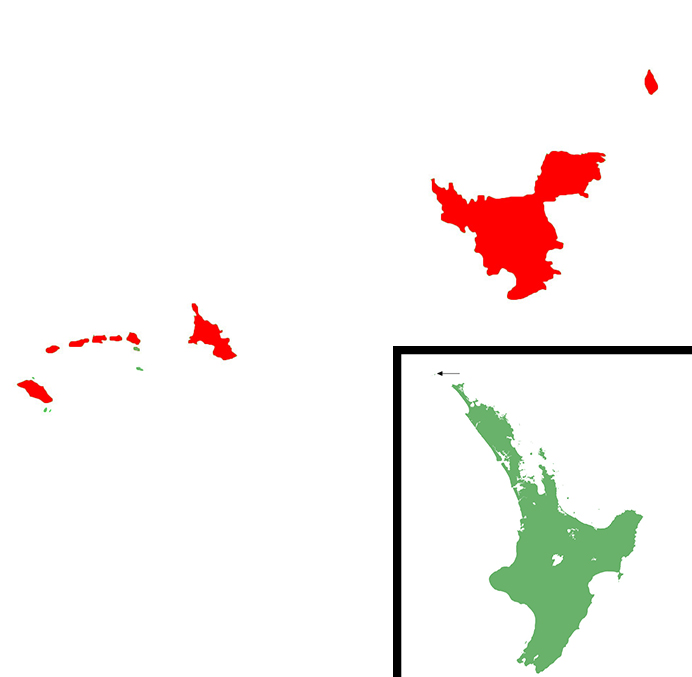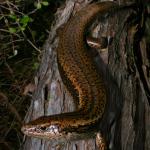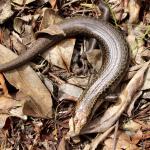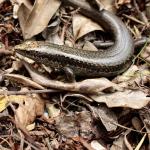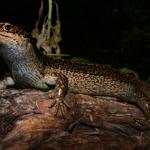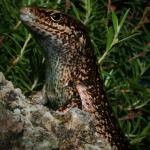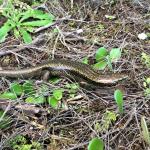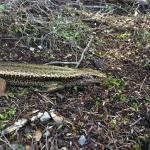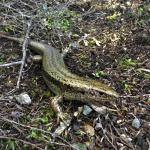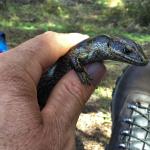- Home
- Herpetofauna Index
- Native
- Oligosoma Fallai
Oligosoma fallai
Falla's skink
Oligosoma fallai
(McCann, 1955)
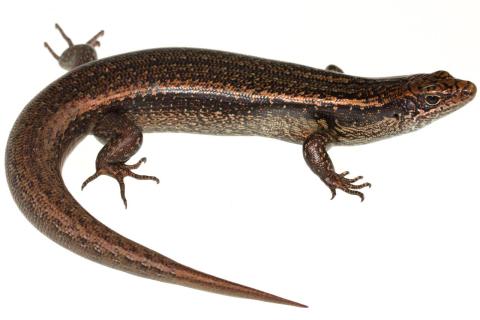
Length: SVL up to 145mm, with the tail being equal to or slightly longer than the body length
Weight: up to 86 grams
Description
One of New Zealand's largest skinks, Falla's skinks are large (up to 30cm in total length) and robust in build, with a long blunt snout.
Falla's skinks are coloured light-tan to golden-brown, pink-brown or dark-brown dorsally, with darker and lighter speckling, dark lateral striping, and occassionally with a dark mid-dorsal stripe which does not extend onto the tail. Their tail is thick at the base and equal to, or greater in length than their body (SVL), but often regrown.
Life expectancy
Unknown.
Distribution
Found only on Manawatāwhi / the Three Kings Islands, approximately 55 kilometres north-west of Cape Reinga.
Ecology and habitat
Falla's skinks are cathemeral and will emerge to forage during both day or night. They are avid sun-baskers but a particularly fast-moving / nervous species that will retreat quickly when disturbed. Falla's skinks occupy a wide range of coastal habitats from the shoreline to coastal forest and scrub, preferring relatively open / sunny areas. They are largely terrestrial, but occassionally climb trees or shrubs to forage above-ground. Falla's skinks use coastal debris, dense vegetation, rocks, logs, or seabird burrows as refuge sites when they are not active foraging or basking.
Social structure
Largely unknown. Falla's skinks are believed to be solitary although occur at relatively high density in some areas on the Three Kings Islands.
Breeding biology
Mating occurs in autumn, with up to six young born in late summer / early autumn the following year. Mature females may only reproduce bienially (once every two years).
Diet
Falla's skink are omnivorous with a varied diet including a wide range of invertebrates, fruit and berries from native plants, smaller lizards, and regurgitated fish or carrion in seabird colonies. It has been suggested that the Three Kings tītoki (Alectryon excelsus subsp. grandis) may to some degree rely on the Falla's skink for dispersal given that seedlings are often seen sprouting from under rocks and logs.
Disease
Unknown.
Conservation strategy
Falla's skinks are endemic to the Three Kings Islands and occupy their entire historical range. These islands are pest-free, as such the main threat to these skinks is from the introduction of mammalian predators to their island refuges. A captive population of Falla's skinks is held for insurance purposes.
Interesting notes
Named in honour of Sir Robert Falla; a prominent New Zealand naturalist during the 1900's.
Manawatāwhi / the Three Kings Islands where Falla's skink occur are the northern-most New Zealand island-group on which lizards occur.
The Falla's skink sits within clade 4 (the teardrop skink complex) of the Oligosoma genus, being basal to all other members within the group (e.g. robust, Mcgregor's, Whitaker's, ornate skink etc.).
References
Hitchmough, R.A., Barr, B., Lettink, M., Monks, J., Reardon, J., Tocher, M., van Winkel, D., Rolfe, J. (2016). Conservation status of New Zealand reptiles, 2015; New Zealand threat classification series 17. Wellington: New Zealand Department of Conservation.
Jewell, T. (2011). A photographic guide to reptiles and amphibians of New Zealand. Auckland: New Holland Publishing.
Robb, J. (1986). New Zealand Amphibians & Reptiles (Revised). Auckland: Collins, 128 pp.
van Winkel, D., Baling, M. & Hitchmough, R. (2018). Reptiles and Amphibians of New Zealand: A field guide. Auckland: Auckland University Press, 376 pp.

